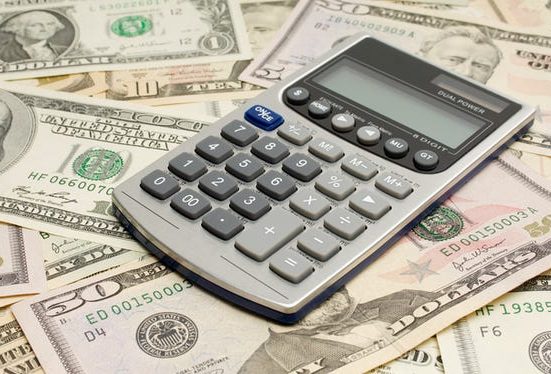Today’s mortgage interest rates are rising for the first time this week. Here are the latest rates for popular home loans:
- 30-year fixed: 7.73%
- 15-year-fixed: 6.94%
- 30-year fixed jumbo: 7.69%
Today’s mortgage interest rates
Generally, home loan interest rates are higher than last week’s. The biggest mover is the 30-year fixed which has increased by 12 basis points week over week. (One basis point equals 0.01.)
30-year mortgage interest rates
The average daily rate for a 30-year fixed mortgage is 7.73%, according to Curinos data. Rates for 30-year home loans last month averaged 7.37%.
If you were to borrow at today’s mortgage rate for 30 years, you’d pay $2,681 a month on a $375,000 home loan.
20-year mortgage interest rates
The average 20-year fixed mortgage rate is 7.59% on Friday, according to Curinos data. That represents a week-over-week increase of 9 basis points.
Though less popular than 30- and 15-year terms, many reputable lenders offer the ability to select a 20-year term. Just be aware that prioritizing a 20-year term (and its higher monthly payments) over a 30-year repayment period (lower monthly dues) could limit the loan amount you’re eligible to receive.
15-year mortgage interest rates
The average daily rate for a 15-year fixed mortgage is 6.94%, according to Curinos data. Rates for 15-year home loans last month averaged 6.59%.
If you were to borrow at today’s mortgage rate for 15 years, you’d pay $3,358 in a month on a $375,000 home loan.
30-year fixed jumbo mortgage interest rates
The average daily rate for a 30-year fixed jumbo loan is 7.69%. Rates for 30-year jumbo loans last month averaged 7.30%.
Qualifying for a jumbo loan is more difficult than a conventional fixed-rate mortgage. Given that you’re seeking a larger loan amount, you’ll need to supply a bigger down payment, a better credit score and a stronger financial track record. For example, some jumbo loan lenders require a 20% or greater down payment.
10/6 ARM interest rates
The average daily rate for a 10/6 ARM is 7.52%, according to Curinos data. That represents a week-over-week increase of 10 basis points.
If you opt for a 10/6 ARM, ask your prospective mortgage lender about how low or high your rate could go once it becomes variable. Then, you can anticipate how widely your mortgage payments could swing long-term.
7/6 ARM interest rates
The average daily rate for a 7/6 ARM is 7.52%, according to Curinos data. Rates for 7/6 ARMs last week averaged 7.45%.
If you plan to move from the home you’re purchasing within five years, a 7/6 ARM could be a good fit. You’d reap the rewards of the introductory, “teaser” interest rate and not necessarily face the higher APR once it kicks in at the eight-year mark.
Understanding mortgage interest rates
The interest rate on a mortgage is the primary cost of borrowing the principal loan amount. The lower your interest rate, the less you pay to your lender during your repayment term.
While interest rates are a clear indication of the broader market, it’s critical to consider annual percentage rates (or APRs) when comparing home loan options. APR accounts for a lender’s interest rate plus associated fees. (When you borrow a home loan, the majority of your payments in the early years are directed to interest based on how your lender amortizes the loan.)
High rates, which is how rates have trended in 2023, tend to cool the housing market. Prospective homebuyers may wait for lower rates, and potential home sellers might be less inclined to list their property amid lower demand.
Types of mortgage interest rates
A fixed mortgage rate stays the same throughout your repayment. If you borrow a home loan tagged with an 8.00% APR for a 30-year term, the APR in year one of repayment would be the same as in year 30 (unless you refinanced to a different rate along the way). (While your APR and your principal-and-interest payment doesn’t change, the amount of interest you pay each month does change, based on how your lender amortizes the loan.)
Adjustable rate mortgages (ARMs), on the other hand, combine variable and fixed rates: Your repayment would begin with a lower-than-fixed APR for a set period, then rise or fall depending on the market. A 7/1 ARM, for example, would mean that your rate is fixed for the initial seven years but would adjust annually until your debt is repaid. If you’re planning to move from your house before the fixed rate expires, or if you expect rates to fall over time, ARMs could be a good idea.
Fixed mortgage rates offer consistency for your budget since your monthly dues wouldn’t change. ARMs, however, offer equal parts risk and reward: Your monthly payment could rise or fall over time.
Factors that influence mortgage interest rates
Mortgage rates fluctuate according to economic factors beyond the control of everyday consumers. Rates typically follow the trajectory of the benchmark 10-year Treasury note and may be impacted by Federal Reserve actions, among other factors. In October 2023, with the Fed still combating inflation, the 10-year yield hit 5.00%, a culmination of climbing rates since 2022. In the same month, the average 30-year fixed mortgage rate edged toward 8.00%.
As an applicant, the strength of your credit and financial history most directly influences the mortgage rates you’ll be quoted. Lenders view your mortgage application through the prism of how likely you would be to repay your debt.
Tips for getting the best mortgage interest rate
Shop around, to start. By making apples-to-apples comparisons of APR offers from at least a few lenders, you can ensure you’ll get the best possible loan for your situation. Better yet, prioritize lenders that allow you to “lock in” a rate at application and “float down” to a lower one if the market changes before your loan’s finalized.
In advance of applying for home loan preapproval, you can take steps to strengthen your application — and therefore snag a lower rate. These steps include:
- Check your credit reports via Annual Credit Report and dispute any errors with the appropriate credit bureau (Equifax, Experian and TransUnion). While some errors won’t influence your credit scores (for example, if your name is misspelled), some may impact your scores (for example, a late payment that’s older than seven years and is still on your report).
- Monitor your credit score by using a free service through your financial institution or by using a paid service.
- Save a 20% down payment, if possible. Or, if you’ll fall short of the 20% threshold, consider using some of your savings to buy discount points from your lender. Points are a way to “pay down” your rate at the time of borrowing.
- Review homebuying assistance programs especially if you’re a first-time homebuyer, as they can offer different types of mortgages and loan term lengths to nudge your potential rate downward.
- Pay down your other consumer debt, such as credit card balances and student loans. This will improve your debt-to-income ratio and make you a stronger candidate to score the best mortgage rates.
How to compare mortgage interest rates
After selecting your preferred home loan type and having a home offer accepted, compare APRs with at least three (and ideally, more) lenders. You can gather mortgage rates (and loan estimates) via your bank, credit union or through online services.
If you’d rather farm out the shopping-around process, you could work with a mortgage broker who goes to market for you. Brokers could also connect you to offers from mortgage wholesalers that may not work directly with consumers.
Mortgage interest rates projections
Given persistent inflation, among other macroeconomic factors, many experts predict that mortgage rates will remain at similar levels well into 2024. The Fed’s efforts to combat inflation — namely, announcing any additional rate hikes — is likely to have the greatest short-term impact on the mortgage rate environment.
Experts’ forecasts are more clear on this front: The pandemic-era days of 3.00% mortgage rates are over. The average 30-year fixed mortgage rate crested close to 8.00% in October 2023.
Frequently asked questions (FAQs)
The main difference is that fixed rates are static for the full term of the mortgage and adjustable mortgage rates (ARMs) are not. If you like knowing exactly what your payment will be each month, a fixed rate is likely the better option. However, if you have an appetite for rate savings — and the stomach for risk — you could opt for an ARM. Rates on ARMs typically start out lower than fixed APRs for a number of years before rising or falling with market conditions.
You should choose the loan term that delivers the monthly payment most suitable for your budget. A shorter term (say, 15 years) typically means you’ll pay less in interest over the life of the loan, but your monthly bill will be higher. A longer term (think 30 years) significantly increases the cost of borrowing, thanks to accruing interest, but drops your monthly dues, too. It’s helpful to use a free, online mortgage calculator to estimate your monthly — and total — cost of repaying a mortgage on various terms.
Yes, you can negotiate your mortgage rate, as well as lender fees to lower the quoted APR. If you have excellent credit and a strong debt-to-income ratio, you might leverage your application’s strength to request a rate discount. Or, if you’ve received multiple rate quotes, you can ask your preferred lender to meet or beat an APR offered by a competitor. It never hurts to ask. If all else fails, you could look into buying discount points (using cash) to reduce your rate.
Yes, mortgage rates are always changing, sometimes by the hour. Though rates typically don’t shift dramatically on the same day or within the same week, every change is notable. That’s because even a seemingly slight change in basis points — one basis point equals 0.01% — results in greater savings or costs for aspiring homebuyers about to make what is usually their largest investment.
Yes, between the time you accept your loan offer and close on the mortgage, you can lock in your mortgage rate. The caveat is that closing occurs before the rate lock expires, usually 30, 45 or 60 days. Before accepting any lender’s loan offer, ask about its rate-lock program, plus whether it offers the option to “float down” to a lower APR if the market sees decreased rates before your loan is finalized.
Average mortgage interest rates — such as the average for 30-year, fixed-rate home loans — are a barometer for the broader market. They speak to a typical interest rate awarded to borrowers with a certain credit profile. But not everyone receives the same mortgage rate. Especially creditworthy borrowers will come closest to qualifying for the basement APRs promoted by lenders. Not-as-creditworthy applicants will typically be quoted rates on the higher end of promoted rate ranges.







